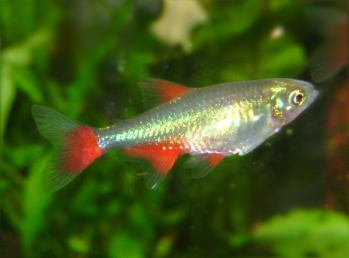|
Subfamily
In biological classification, a subfamily (Latin: ', plural ') is an auxiliary (intermediate) taxonomic rank, next below family but more inclusive than genus. Standard nomenclature rules end botanical subfamily names with "-oideae", and zoological subfamily names with "-inae". Detarioideae is an example of a botanical subfamily. Detarioideae is a subdivision of the family Fabaceae (legumes), containing 84 genera. Stevardiinae is an example of a zoological subfamily. Stevardiinae is a large subdivision of the family Characidae, a diverse clade In biology, a clade (), also known as a Monophyly, monophyletic group or natural group, is a group of organisms that is composed of a common ancestor and all of its descendants. Clades are the fundamental unit of cladistics, a modern approach t ... of freshwater fish. See also * International Code of Nomenclature for algae, fungi, and plants * International Code of Zoological Nomenclature * Rank (botany) * Rank (zoolo ... [...More Info...] [...Related Items...] OR: [Wikipedia] [Google] [Baidu] |
Rank (zoology)
In biology, taxonomic rank (which some authors prefer to call nomenclatural rank because ranking is part of nomenclature rather than taxonomy proper, according to some definitions of these terms) is the relative or absolute level of a group of organisms (a ''taxon'') in a hierarchy that reflects evolutionary relationships. Thus, the most inclusive clades (such as Eukarya and Animalia) have the highest ranks, whereas the least inclusive ones (such as ''Homo sapiens'' or '' Bufo bufo'') have the lowest ranks. Ranks can be either relative and be denoted by an indented taxonomy in which the level of indentation reflects the rank, or absolute, in which various terms, such as species, genus, family, order, class, phylum, kingdom, and domain designate rank. This page emphasizes absolute ranks and the rank-based codes (the Zoological Code, the Botanical Code, the Code for Cultivated Plants, the Prokaryotic Code, and thCode for Viruses require them. However, absolute ranks are not r ... [...More Info...] [...Related Items...] OR: [Wikipedia] [Google] [Baidu] |
Characidae
Characidae, the characids, is a family of freshwater subtropical and tropical fish belonging to the order Characiformes. They are found throughout much of Central and South America, including such major waterways as the Amazon and Orinoco Rivers.Nelson (2006) These fish vary in length; many are less than . The name " characins" is a historical one, but scientists today tend to prefer "characids" to reflect their status as a, by and large, monophyletic group (at family rank). This family includes some of the first characiforms to be described to science, such as '' Charax'' and '' Tetragonopterus'', and thus lend their name to the order, as well as to common names such as "characin" and " tetra". Past taxonomic treatments had a much more expansive definition of the family, including numerous South American fish families such as the piranhas and dorados, as well as the African alestids. Following multiple taxonomic revisions, this was eventually restricted to just the Americ ... [...More Info...] [...Related Items...] OR: [Wikipedia] [Google] [Baidu] |
Fabaceae
Fabaceae () or Leguminosae,International Code of Nomenclature for algae, fungi, and plants. Article 18.5 states: "The following names, of long usage, are treated as validly published: ....Leguminosae (nom. alt.: Fabaceae; type: Faba Mill. Vicia L.; ... When the Papilionaceae are regarded as a family distinct from the remainder of the Leguminosae, the name Papilionaceae is conserved against Leguminosae." English pronunciations are as follows: , and . commonly known as the legume, pea, or bean family, is a large and agriculturally important family of |
Detarioideae
The subfamily Detarioideae is one of the subdivisions of the plant family Fabaceae (legumes). This subfamily includes many tropical trees, some of which are used for timber or have ecological importance. The subfamily consists of 84 genera, most of which are native to Africa and Asia. Pride of Burma (''Amherstia nobilis'') and tamarind (''Tamarindus indica'') are two of the most notable species in Detarioideae. It has the following clade-based definition: The most inclusive crown clade containing '' Goniorrhachis marginata'' Taub. and '' Aphanocalyx cynometroides'' Oliv., but not '' Cercis canadensis'' L., '' Duparquetia orchidacea'' Baill., or '' Bobgunnia fistuloides'' (Harms) J. H. Kirkbr. & Wiersema. Taxonomy Detarioideae comprises the following tribes and genera: Schotieae * '' Schotia'' Jacq. Barnebydendreae * '' Barnebydendron'' J.H.Kirkbr. * '' Goniorrhachis'' Taub. Detarieae * '' Augouardia'' Pellegr. * '' Baikiaea'' Benth. * '' Brandzeia'' Baill. * '' Colophosper ... [...More Info...] [...Related Items...] OR: [Wikipedia] [Google] [Baidu] |
Botany
Botany, also called plant science, is the branch of natural science and biology studying plants, especially Plant anatomy, their anatomy, Plant taxonomy, taxonomy, and Plant ecology, ecology. A botanist or plant scientist is a scientist who specialises in this field. "Plant" and "botany" may be defined more narrowly to include only land plants and their study, which is also known as phytology. Phytologists or botanists (in the strict sense) study approximately 410,000 species of Embryophyte, land plants, including some 391,000 species of vascular plants (of which approximately 369,000 are flowering plants) and approximately 20,000 bryophytes. Botany originated as history of herbalism#Prehistory, prehistoric herbalism to identify and later cultivate plants that were edible, poisonous, and medicinal, making it one of the first endeavours of human investigation. Medieval physic gardens, often attached to Monastery, monasteries, contained plants possibly having medicinal benefit. ... [...More Info...] [...Related Items...] OR: [Wikipedia] [Google] [Baidu] |
Zoology
Zoology ( , ) is the scientific study of animals. Its studies include the anatomy, structure, embryology, Biological classification, classification, Ethology, habits, and distribution of all animals, both living and extinction, extinct, and how they interact with their ecosystems. Zoology is one of the primary branches of biology. The term is derived from Ancient Greek , ('animal'), and , ('knowledge', 'study'). Although humans have always been interested in the natural history of the animals they saw around them, and used this knowledge to domesticate certain species, the formal study of zoology can be said to have originated with Aristotle. He viewed animals as living organisms, studied their structure and development, and considered their adaptations to their surroundings and the function of their parts. Modern zoology has its origins during the Renaissance and early modern period, with Carl Linnaeus, Antonie van Leeuwenhoek, Robert Hooke, Charles Darwin, Gregor Mendel a ... [...More Info...] [...Related Items...] OR: [Wikipedia] [Google] [Baidu] |
Latin
Latin ( or ) is a classical language belonging to the Italic languages, Italic branch of the Indo-European languages. Latin was originally spoken by the Latins (Italic tribe), Latins in Latium (now known as Lazio), the lower Tiber area around Rome, Italy. Through the expansion of the Roman Republic, it became the dominant language in the Italian Peninsula and subsequently throughout the Roman Empire. It has greatly influenced many languages, Latin influence in English, including English, having contributed List of Latin words with English derivatives, many words to the English lexicon, particularly after the Christianity in Anglo-Saxon England, Christianization of the Anglo-Saxons and the Norman Conquest. Latin Root (linguistics), roots appear frequently in the technical vocabulary used by fields such as theology, List of Latin and Greek words commonly used in systematic names, the sciences, List of medical roots, suffixes and prefixes, medicine, and List of Latin legal terms ... [...More Info...] [...Related Items...] OR: [Wikipedia] [Google] [Baidu] |
Nomenclature
Nomenclature (, ) is a system of names or terms, or the rules for forming these terms in a particular field of arts or sciences. (The theoretical field studying nomenclature is sometimes referred to as ''onymology'' or ''taxonymy'' ). The principles of naming vary from the relatively informal conventions of everyday speech to the internationally agreed principles, rules, and recommendations that govern the formation and use of the specialist terminology used in scientific and any other disciplines. Naming "things" is a part of general human communication using words and language: it is an aspect of everyday taxonomy as people distinguish the objects of their experience, together with their similarities and differences, which observers identify, name and classify. The use of names, as the many different kinds of nouns embedded in different languages, connects nomenclature to theoretical linguistics, while the way humans mentally structure the world in relation to word meanings a ... [...More Info...] [...Related Items...] OR: [Wikipedia] [Google] [Baidu] |
Genus
Genus (; : genera ) is a taxonomic rank above species and below family (taxonomy), family as used in the biological classification of extant taxon, living and fossil organisms as well as Virus classification#ICTV classification, viruses. In binomial nomenclature, the genus name forms the first part of the binomial species name for each species within the genus. :E.g. ''Panthera leo'' (lion) and ''Panthera onca'' (jaguar) are two species within the genus ''Panthera''. ''Panthera'' is a genus within the family Felidae. The composition of a genus is determined by taxonomy (biology), taxonomists. The standards for genus classification are not strictly codified, so different authorities often produce different classifications for genera. There are some general practices used, however, including the idea that a newly defined genus should fulfill these three criteria to be descriptively useful: # monophyly – all descendants of an ancestral taxon are grouped together (i.e. Phylogeneti ... [...More Info...] [...Related Items...] OR: [Wikipedia] [Google] [Baidu] |
Clade
In biology, a clade (), also known as a Monophyly, monophyletic group or natural group, is a group of organisms that is composed of a common ancestor and all of its descendants. Clades are the fundamental unit of cladistics, a modern approach to taxonomy adopted by most biological fields. The common ancestor may be an individual, a population, or a species (extinct or Extant taxon, extant). Clades are nested, one in another, as each branch in turn splits into smaller branches. These splits reflect evolutionary history as populations diverged and evolved independently. Clades are termed ''monophyletic'' (Greek: "one clan") groups. Over the last few decades, the cladistic approach has revolutionized biological classification and revealed surprising evolutionary relationships among organisms. Increasingly, taxonomists try to avoid naming Taxon, taxa that are not clades; that is, taxa that are not Monophyly, monophyletic. Some of the relationships between organisms that the molecul ... [...More Info...] [...Related Items...] OR: [Wikipedia] [Google] [Baidu] |






